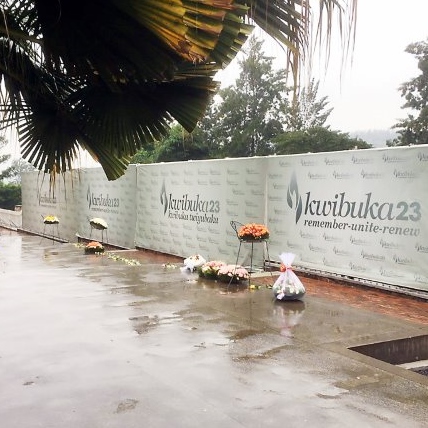
SA

Kigali’s genocide memorial evokes Jewish links
STEVEN GRUZD
April 7 marks 24 years since the 100 days of terror in 1994. It refers to the bloodbath in Rwanda that left almost a million Tutsis and moderate Hutus brutally massacred – by soldiers, neighbours and family members. Millions more were displaced and an entire society was traumatised.
With April also heralding Yom Hashoah, when Israel and the Jewish world commemorate the six million Jews murdered in Nazi-occupied Europe, visiting this memorial in Rwanda was especially poignant for me.
This museum – a place of mourning, reflection and education – reveals multiple Jewish connections.
In 1999, Kigali’s mayor had visited Beth Shalom, the UK’s National Holocaust Centre and Museum. Situated in Laxton, Nottinghamshire, Beth Shalom is housed on the converted family farm of non- Jewish brothers Stephen and James Smith, who were inspired to build it by a visit to Yad Vashem, Israel’s main Shoah memorial.
In 2000, the Smiths formed the Aegis Trust, which raised funds to develop the memorial in Kigali. It was officially opened in April 2004, on the 10th anniversary of the genocide.
The KGM is one of 200 places commemorating the genocide in Rwanda, bringing home just how widespread the systematic slaughter was in this small country of 26 338km². Today, it contains the reburied remains of more than 250 000 murdered Rwandans in huge, concrete-topped mass graves. Video testimonies by the survivors of that genocide explain how it is a place for them to reunite with the loved ones they tragically lost.
The museum section tells the story of the Rwandan genocide, from its roots in colonial times – when complex ethnic identities were moulded, reinforced and exploited – to the 100 horrific days between April and June 1994 (just as the world was celebrating South Africa’s transition to democratic rule), and culminating in efforts to heal, rebuild and rebrand this small but successful African state.
Echoes of the Shoah resound – hateful propaganda, demonising Tutsis as inyezi, cockroaches to be stamped out; the violent murder of men, women and children to obliterate a people and its future generations; and an indifferent international community.
The harrowing display of rows of human skulls, many of them cracked by machete blows, and hundreds of blanched human femurs reminded me of the nauseating rooms full of suitcases, human hair, spectacles and prosthetic limbs I saw at Auschwitz.
The room, filled with thousands of faded photographs of the departed doing ordinary things, was harrowing. It reminded me of Yad Vashem’s Hall of Names.
The numbers shock: more than 300 000 Rwandan children were orphaned and 80% of the country’s children experienced death(s) in the family in 1994; 70% witnessed someone being killed or injured; and 90% believed they would die. Two-thirds of the population of 10 million was displaced or fled “out of guilt, fear, confusion or being held hostage”, I read on one of the information panels.
On the top floor is a children’s memorial, with bright orange walls and huge photographs of about 24 radiant, beaming but now dead children – killed by machetes, shots to the head, stab wounds in a church, torture, a hand grenade in a shower, or buried alive.
This light and vibrant section contrasts with Yad Vashem’s memorial to the 1.5 million children killed in the Shoah, where a single candle is reflected infinitely in a dark chamber as details of children who perished are solemnly read out.
On another KGM wall, Apollon Kabahizi asks: “When they said ‘never again’ after the Holocaust, was it meant for some people and not for others?”
The upper floor also houses a panel lauding Raphael Lemkin, the Polish-Jewish lawyer who developed the term “genocide” after World War II – elegantly immortalised in the award-winning book East West Street by Philippe Sands. It has harrowing displays of other genocides too: the Herero in Namibia (then German South-West Africa) in 1904-5, the Shoah, Cambodia and the former Yugoslavia.
A final video has genocide survivors explaining the catharsis of being involved in the museum, telling their stories, and remembering their missing loved ones. I was moved to tears as two survivors told how they met, shared experiences and eventually married, noting that there were hardly any adults at their wedding. “We feel the cost at all times,” said the husband. Scenes of their new family, their children playing in a park, shows that people can, eventually, rebuild.
As I left the museum, I read the last quotation, by Stephen D Smith, executive director of the Aegis Trust. It said it all: “If you must remember, remember this… The Nazis did not kill six million Jews… nor did the Interahamwe kill a million Tutsis. They killed one, and then another, then another… Genocide is not a single act of murder, it’s millions of acts of murder.”




